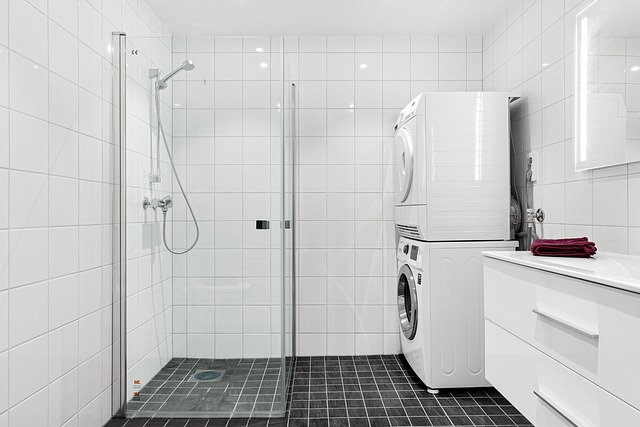Replace your shower head with ease by gathering essential tools like adjustable wrenches, teflon tape, and a new shower head. Consider different types—fixed, handheld, or rain shower—and ensure compatibility with your plumbing. Follow our simple steps for a secure fit and enhanced shower experience, as outlined in our guide "How to Replace a Shower Head."
Tired of an outdated or broken shower head? This ultimate guide will walk you through replacing it, even if DIY isn’t your forte. Learn how to gather the necessary tools and materials, from essential items like adjustable wrenches to compatible shower head types. We’ll detail each step, from shutting off the water supply to testing the new head’s connection, ensuring a hassle-free experience. Plus, discover maintenance tips to keep your replacement lasting for years.
- Gathering the Necessary Tools and Materials
- – List of required tools
- – Types of shower heads and their compatibility
Gathering the Necessary Tools and Materials

Before you begin your DIY shower head replacement project, make sure you have all the necessary tools and materials on hand. The most basic set includes a new shower head (choose one that suits your preferences), adjustable wrenches or pliers for securing or loosening connections, and some teflon tape to prevent leaks. For added convenience, consider having a bucket ready to catch any debris or water as you work, along with clean towels to wipe down the area afterward. If your shower head has been stubbornly stuck in place, you might also need a pair of slip-joint pliers for extra leverage. With these essentials gathered, you’re well on your way to successfully replacing your shower head without any hassle—even if you’re not particularly handy!
– List of required tools

To tackle the task of replacing your shower head, you’ll need just a few basic tools. Here’s what you require:
1. New shower head: Choose one that suits your preferences and fits your existing shower arm.
2. Adjustable wrench or pliers: These will help you tighten or loosen the connections securely.
3. Screwdriver (if needed): Some shower heads might require a flat-head screwdriver to remove any securing screws.
4. Rubber mallet (optional but helpful): This tool can gently tap and maneuver parts into place without causing damage.
– Types of shower heads and their compatibility

When it comes to replacing your shower head, understanding the different types and their compatibility is key. The most common types include fixed, handheld, and rain shower heads. Fixed shower heads are permanently installed and typically screw into a standard thread size, making them universal for most existing fixtures. Handheld models offer more flexibility, allowing you to direct water flow as desired, but they may require additional installation steps or adapters to fit your current setup. Rain shower heads mimic the experience of a natural rainfall, characterized by a large, gentle spray—they often come with adjustable settings and can be installed in most standard shower arm sizes.
Before purchasing a new shower head, check your existing plumbing and ensure it aligns with the recommended thread size for your chosen replacement. This ensures a secure fit, preventing leaks and ensuring a satisfying shower experience. Refer to your user manual or consult a professional if you’re unsure about compatibility.
Replacing a shower head is an easy DIY project that can instantly transform your bathing experience. By following this guide, you’ve learned the essential steps, from gathering the right tools and materials to selecting the perfect fit for your existing plumbing. Whether you’re a seasoned handyman or a novice, with these simple instructions, you now have the confidence to tackle this task and enjoy a refreshed shower in no time!
